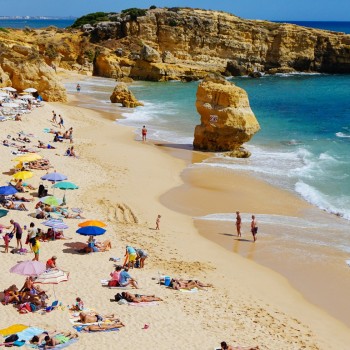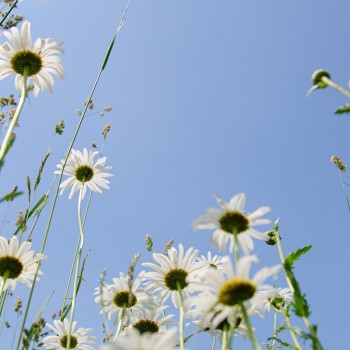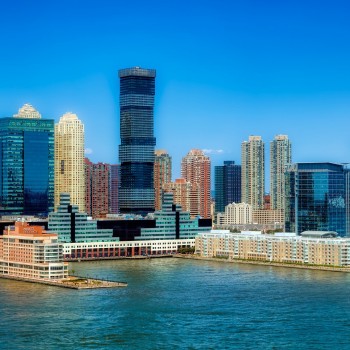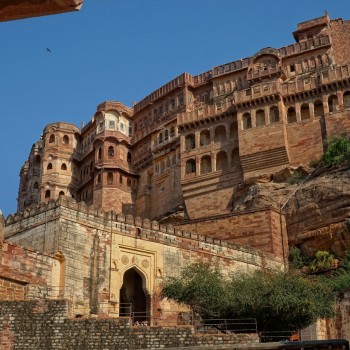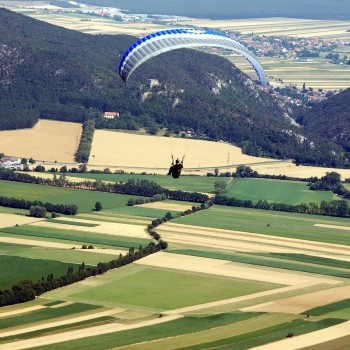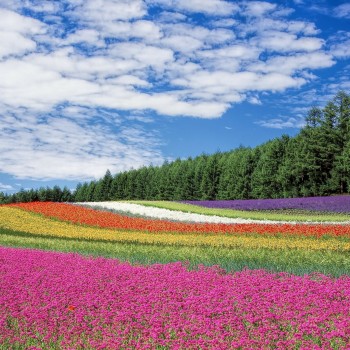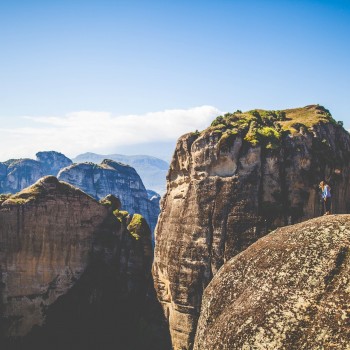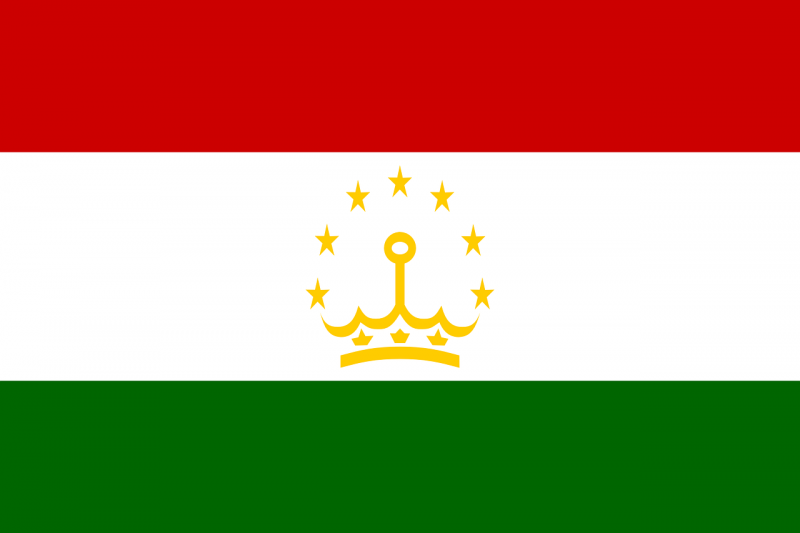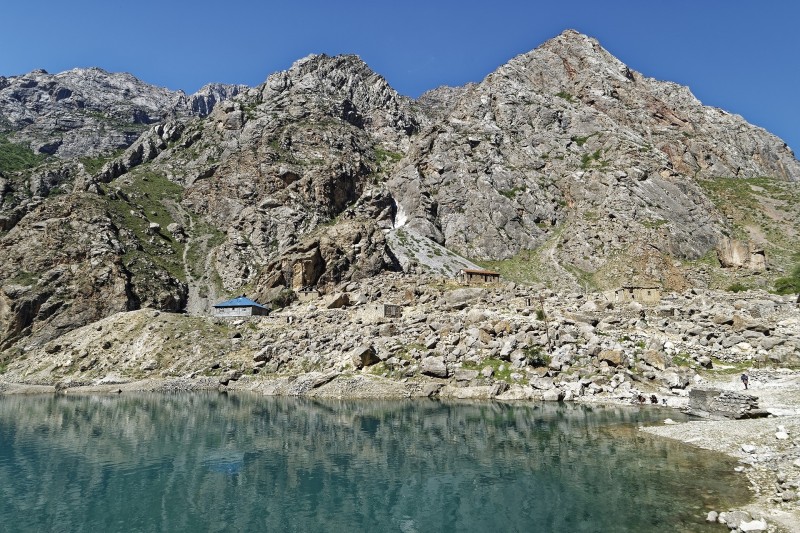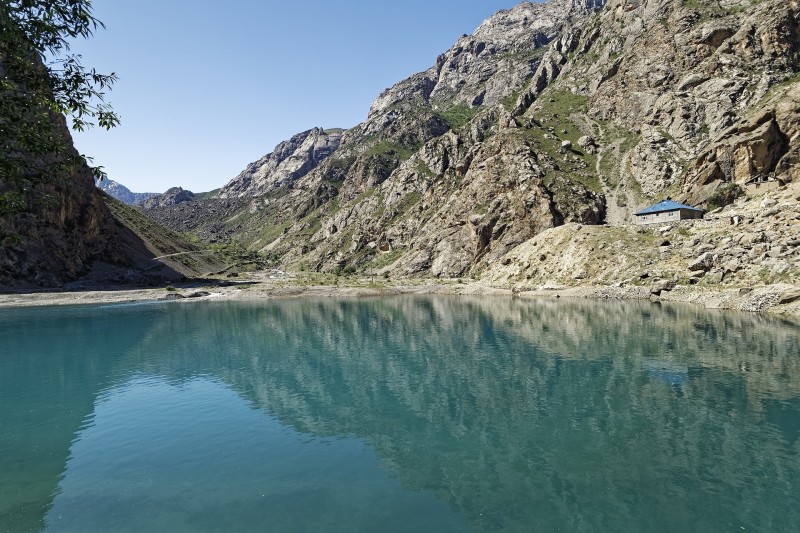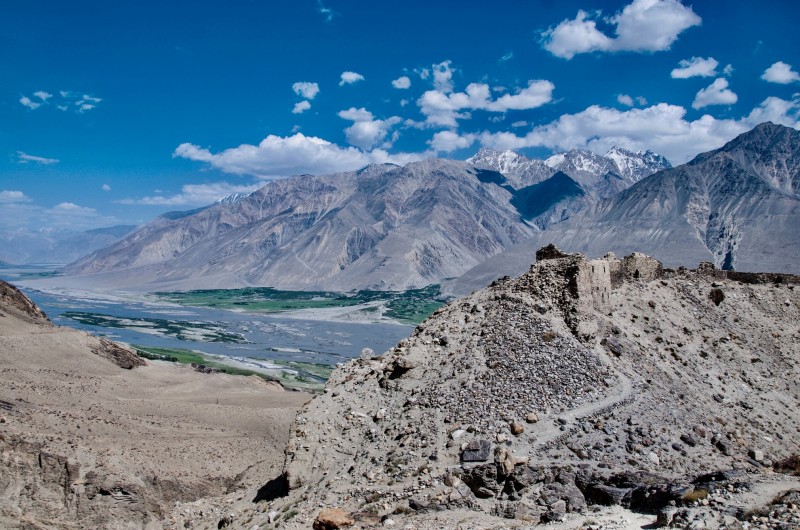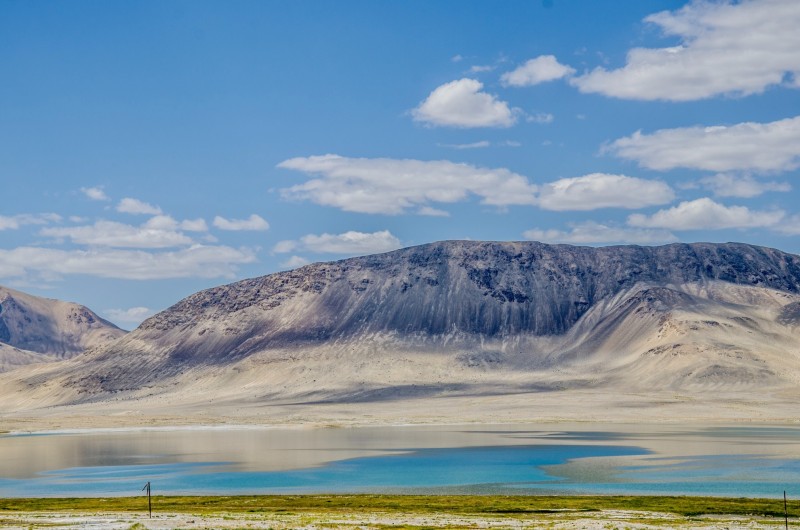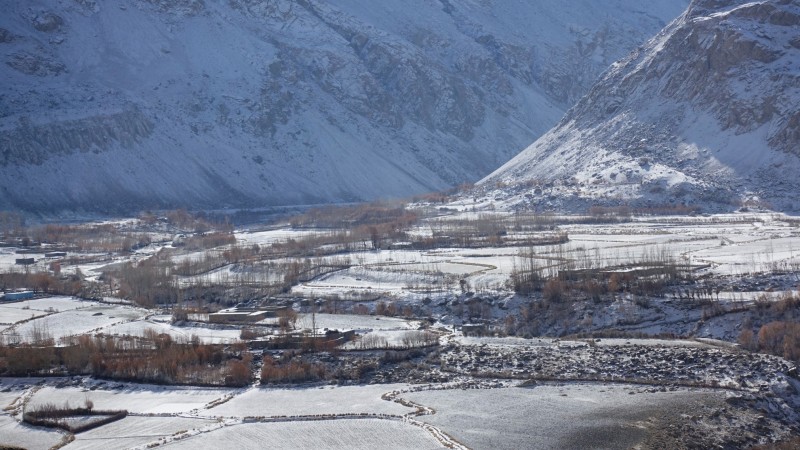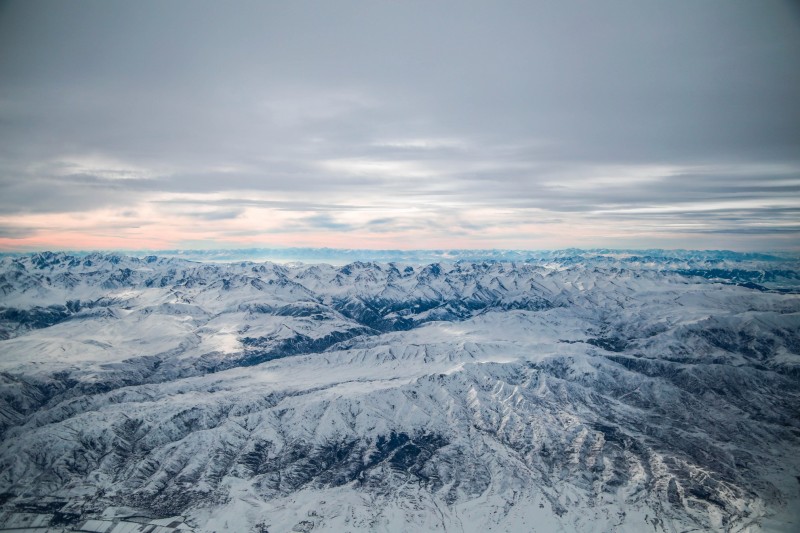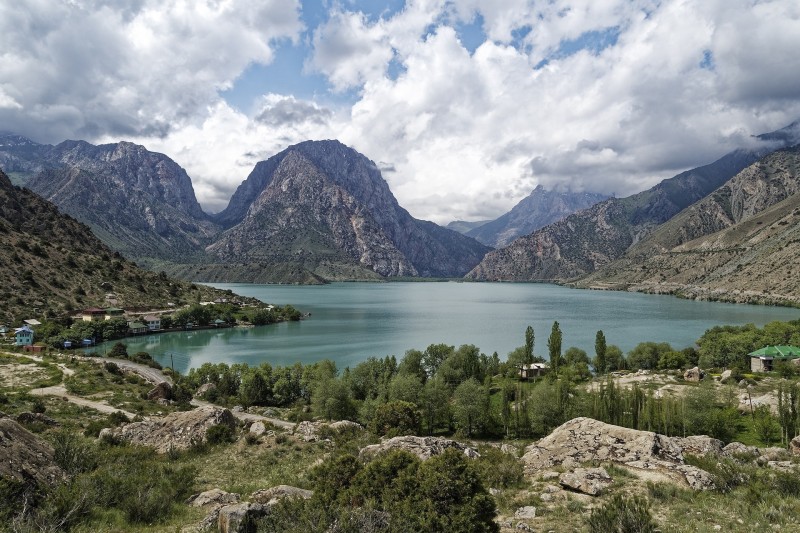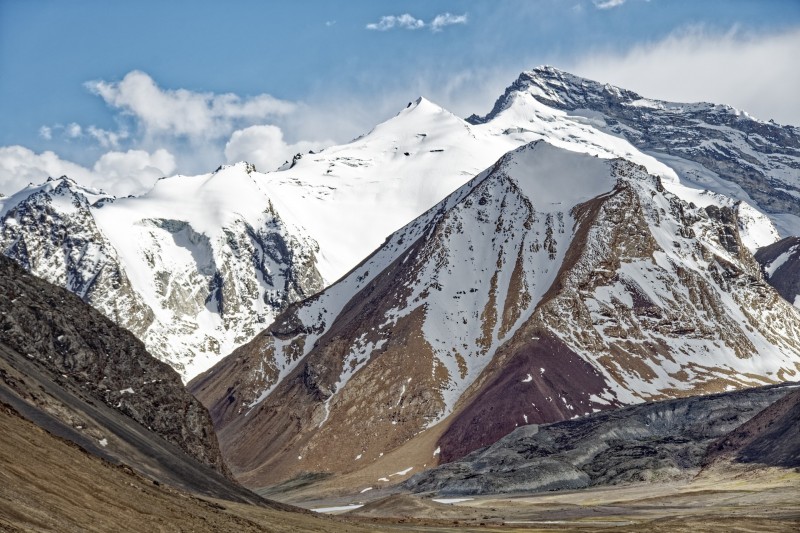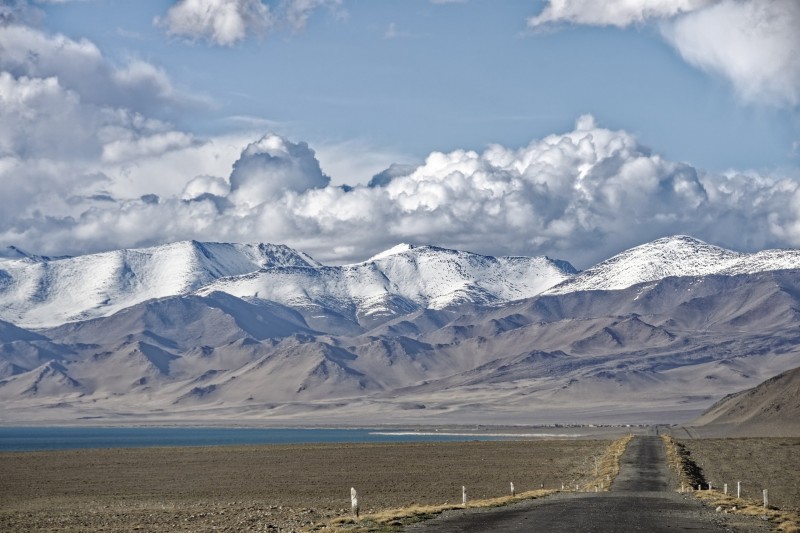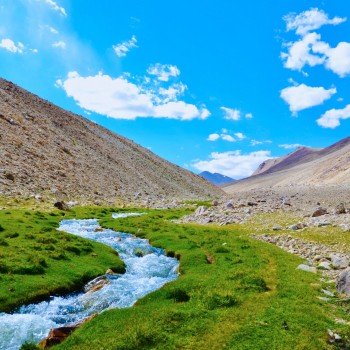Tajikistan
Tajikistan
Capital city description
Dushanbe is the capital and largest city in Tajikistan. Dushanbe's name means "Monday" in the Persian language, having been built on the site of a Monday market. The city's history began in the early XVIIcentury, at the crossroads of Asian roads on Monday, staged a small bazaar. Afterward, the bazaar has become a small village and continuously growing. Today in Dushanbe built not one broad street, there are several large areas, and a lovely park with a fountain always crowded with people.
Under the Soviets, Dushanbe proliferated and was endowed with many industrial enterprises and cultural institutions. The city was peaceful and prosperous and had a multi-ethnic population due to an influx of Russian-speaking workers from other parts of the Soviet Union.
Climate
In Tajikistan, the climate is arid continental, with cold winters and sweltering, sunny summers. Since it's a mountainous country, both temperature and rainfall vary with altitude and slope exposure. There are extensive glaciers and snowfields; the easternmost and the south-western areas are the driest and are virtually desert.
Languages spoken
The Tajik language is the official language of Tajikistan. The language is used widely in government administration, education, business, courts, and the daily lives of the people of Tajikistan. Russian, English, and the Pamiri and Yaghnobi languages are also some spoken languages of the people of Tajikistan.
Fun/Fascinating Facts
- The Nurek Dam, located on the Vakhsh River, is the second-tallest man-made dam. It is located in western Tajikistan and has a total height of 300 meters.
- Lake Iskenderkul means "Lake Alexander" in the local language. As the main charm of the country, various legends exist about the lake. One of them tells that Alexander the Great came across a village that did not want to be surrendered during the campaign. Eventually, he ordered to direct the river to the town to flood it, resulting in Iskanderkul Lake's formation.
- It is considered highly attractive for Tajikistani women to have a monobrow.
- Mountains cover more than 90% of the land in Tajikistan. Half of the country has an elevation of more than 3000 meters above sea level.
- Tajikistan has one of the Longest Glaciers in the world. The Fedchenko Glacier, located in the Yazgulem Range of the Pamir Mountains, is the longest in the country. This glacier has the honor of being the longest glacier in the world outside the Polar regions. It has a total length of around 77 km and covers a total area of 700 km2.
Unique Customs/Traditions
- Tajik music and dances were integral to significant life events and are still performed at weddings and other ceremonies. Some dances are specific to regions, like the Pamir Mountains and the flatter areas like the Gissar Valley. Other dances and music in Tajikistan tell stories about historical events and other parts of culture, like carpets, weapons, and musical instruments.
- Small caps called Toki or kallapush are ubiquitous and are worn by both men and women, with different ways depending on the region and who’s wearing the hat. Traditional Tajik clothing is still worn by many people, especially in the areas and in smaller villages.
- Weddings in Tajikistan are a big deal and mark a transition into a new life for the couple. There are plenty of Tajik traditions from courtship through engagement, and weddings are full of festivities. There are plenty of ways Tajik weddings and practices ensure a happy life and plenty of luck for the new family.
- Traditional Tajik meals begin with sweet dishes such as halwa and tea and then progress to soups and meat before finishing with a pilaf. The Tajik national dish is Kabuli pulao, a rice dish with shredded yellow turnip or carrot, meat, and olive oil or drippings. Every meal is a ceremony. Tajiks treat food with great respect, especially bread, considered sacred. Bread must not be thrown or dropped on the floor; it should always be set carefully upright and broken carefully, not cut with a knife.
Popular universities
| Name | Description | |
|---|---|---|
| Tajik National University | Tajik National University (TNU)is a public higher education institution in Tajikistan, established in 1947. The main campus is located in the city of the capital of Tajikistan - Dushanbe. Tajik National University (TNU) offers courses and programs leading to officially recognized higher education degrees in several areas of study. | |
| Tajik State Medical University | Tajik State Medical University is a famous and prestigious government institute. It is located in Dushanbe, Tajikistan, established in 1939 as a public university for medical sciences. Tajik State Medical University is a leading university for offering various disciplines in the medical line such as Surgery, Gynecology, General Medicine, etc. | |
| Russian-Tajik Slavonic University | Russian-Tajik Slavonic University, founded in 1996, is a non-profit public higher education institution located in Dushanbe. Russian-Tajik Slavonic Russian-Tajik Slavonic University (RTSU) offers courses and programs leading to officially recognized higher education degrees in several areas of study. | |
| Technological University of Tajikistan | The Technological University of Tajikistan is a higher educational institution that educates and trains specialists in technology, communications, economics, and design by license of the Ministry of Education and Science of the Republic of Tajikistan. | |
| Tajik Technical University | Tajik Technical University is a non-profit public higher education institution located in the urban setting of the large city of Dushanbe. Tajik Technical University (TTU), named after academician M. Osimi, was founded in 1956 as a Stalinabad Polytechnical Institute. Tajik Technical University (TTU) is the first and leading higher technical educational institution in Tajikistan. Over the years, the University has trained more than 60,000 engineers, architects, industry economists, and scientific-pedagogical specialists of high qualification in energy, architecture and construction, transport, telecommunications technology, management, and transport construction, metallurgy, and chemical engineering. | |
| Tajik State University of Commerce | The Tajik State University of Commerce is a higher-education institution located in the large city of Dushanbe. This institution also has a branch campus in Khujand. Tajik State University of Commerce (TGUK) offers courses and programs leading to officially recognized higher education degrees in several areas of study. | |
| Tajik Agrarian University | Agricultural University, named after Shirinsho Shotemur, is a university in Dushanbe, Tajikistan, founded in 1931. In 1992, the Institute was again reorganized into 'Tajik Agrarian University. The Government of Tajikistan renames it as 'Tajik Agrarian University Shirinsho Shotemur. There are nine faculties at the university: Agronomy, Agribusiness, Zoo-engineering, Veterinary Science, Economics, Horticulture and Biotechnology of Agriculture, Mechanization of Agriculture, and Hydromeliorative methods. | |
| Tajik Institute of Entrepreneurship | Tajik Institute of Entrepreneurship and Service is a higher-education institution located in the large city of Dushanbe. The Institute of Entrepreneurship and Service was established in 1991 when Tajikistan gained its independence. It is a member of the Academy of the International Science of Higher Schools, the Association of Educational Institutions, and International Universities. The Institute of Entrepreneurship and Service participates in various civic engagement activities, including providing goods and services to local families and communities and services to the local community. | |
| Khujand State University | Khujand State University, named after academician Bobojon Gafurov" is one of the oldest universities in the country. Initially, it was established as Khujand Higher Educational Institute (Leninabad Higher Pedagogical Institute). In 1938, Leninabad State Pedagogical Institute was named after S.M.Kirov, and later in 1991, was awarded the status of the University. There were only two departments: chemistry, biology, and physics and mathematics in Leninabad Pedagogical Institute, where 26 students studied. | |
| N.R.U. Moscow Power Engineering Institute | Founded in 2013, N.R.U. Moscow Power Engineering Institute in Dushanbe is a private higher education institution located in the large city of Dushanbe and officially recognized by the Ministry of Education and Science of the Republic of Tajikistan, N.R.U. Moscow Power Engineering Institute in Dushanbe (MPEI Dushanbe) is a coeducational Tajikistani higher education institution. N.R.U. Moscow Power Engineering Institute in Dushanbe (MPEI Dushanbe) offers courses and programs leading to officially recognized higher education degrees in several areas of study. | |
Festivals & Events
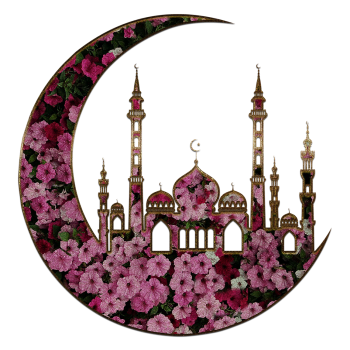
Eid al-Fitr
Date: September
The Muslim event of Eid al-Fitr, also locally referred to as Idi Kurbon or Qurban Eid, occurs according to the Islamic lunar calendar, usually during September, to celebrate the end of the holy Ramadan month of fasting. Fasting is forbidden for Muslims on this day. Festivities usually center on communal prayer, feasting, and family visits. Children are given sweets in the early morning, and the average household receives visits from more than seventy people in a day. It is also a time for gratitude and giving to charity.

Eid ul Adha
Date: July (tentative)
Eid ul Adha or the ‘Feast/Festival of the Sacrifice’ is the second major religious holiday celebrated by Tajik Muslims and Muslims worldwide. While Eid ul Fitr is a time for celebration after the holy month of Ramadan, celebrations for Eid ul Adha around the world commemorate and honor the willingness of Prophet Ibrahim to sacrifice his son, Ismail. By the grace of Allah, a lamb was sacrificed in place of the child.
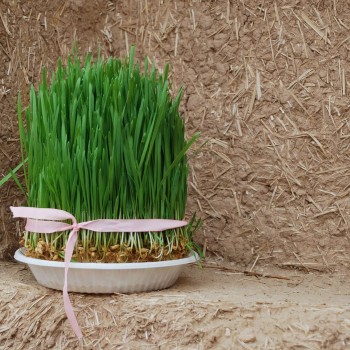
Navruz
Date: March
The Navruz Holiday is one of the Persian nations' most significant national holidays, including Tajiks, over three days between March 20 and 22 each year on the spring equinox. Celebrations are a community affair, with whole towns preparing special dishes, eaten only on this occasion, and taking part in street parties, concerts, and parades, as well as visiting with friends and family.

Victory Day
Date: May 9
Victory Day is a national public holiday has celebrated by Tajikistanon since 1946, on May 9 each year. The event commemorates the Soviet Union WWII defeat of Germany.
Each town has its celebrations that often include greeting veterans and acknowledging their wartime achievements. In Dushanbe, Tajikistan’s capital city, a major military parade takes place every year on Victory Day, with the parading regiments passing through Victory Park. And there is also a ceremonial wreath-laying event and a speech of remembrance given by the sitting president of Tajikistan.
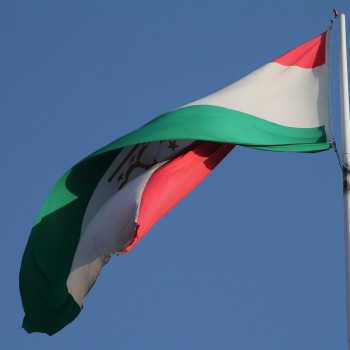
Independence Day
Date: September 9
The state independence of the Republic of Tajikistan is the most important historical and national date of the country.
Tajikistan celebrates its 1991 independence from the Soviet Union on September 9 each year. Independence Day is a nationally observed public holiday celebrated with grandiose street parades, concerts, and fireworks.

Sayru Guli Lola
Date: In Spring
Sayru Guli Lola is a regional festival held in the north of Tajikistan in honor of the native tulips that flower during spring. This colorful two-day festival is hosted by different towns and features traditional choirs, music, and dancing.
During the first day of the festival, the Tajikistan community tie tulips around trees, where people gather to sing, dance, and make wishes. Naqshi Kalon is a traditional song particular to this festival, and evening torchlight parades represent the victory of light over dark. The festival's second day is remembering the dead and bringing offerings to the cemeteries.
Attractions / Top Sights
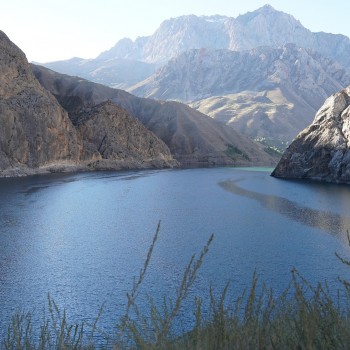
Fann Mountains
When to visit: Late June through mid-September
The Fann Mountains is one of the most prominent tourist attractions in Tajikistan’s Sughd Province. Mountaineering, rock climbing, and ice climbing are activities that Fann Mountains have to offer enjoyed here. The Fann Mountains boasts a hundred peaks and several gorgeous lakes. These peaks make beautiful sights for tourists during different times of the day and months.
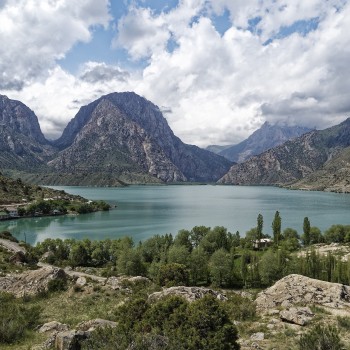
Iskanderkul Lake
When to visit: June to September
Iskanderkul Lake is one of the most stunning places to visit in Tajikistan. It is 2.5 km long and 1 km across and sits at an altitude of 2,255m above sea level with turquoise and calm water. Iskanderkul Lake was named after Alexander the Great. It is also called the Lake of Alexander the Great. “Iskander” was the name of Alexander the Great in the East, and “kul” means lake in Turkic languages.
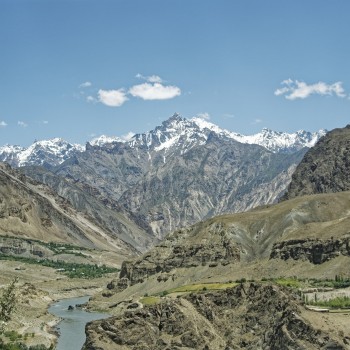
Pamir Highway
When to visit: Between May and September
Pamir Highway is one of the riskiest and adventurous routes globally, built by Soviet military engineers between 1931 and 1934. It was made to facilitate troops, transport, and provision. It is also called M41 and traverses through Afghanistan, Uzbekistan, Tajikistan, and Kyrgyzstan. This highway is paved and unpaved. Unpaved parts make it more dangerous. But this highway has been historically used as one of the old silk routes for trades. The highway offers a unique travel experience and fantastic scenery.

Seven Lakes
When to visit: In autumn, spring and summer
The Seven Lakes is a famous place for tourists, located in the Fan Mountains, in the gorge of the Shing River. Each lake has its name: the lowest lake is called Nezhigon, followed by Soya, Gushor, Nofin, Khurdak, Marguzor (the largest), and Hazorchashma (the highest).
The lakes have very different waters that change colors from turquoise to green, blue, and even black, depending on the sun's position in the sky. Ancient petroglyphs discovered on the shores of one of the lakes indicate that the lakes are pretty old. All lakes except Hazorchashma were formed when rockfalls dammed the river in the narrow gorge.
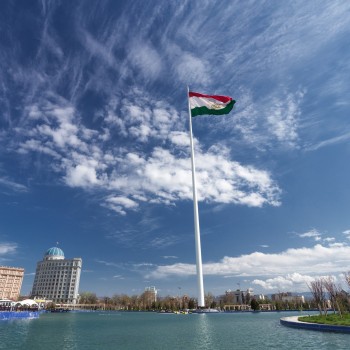
Dushanbe Flagpole
When to visit: Between May and September
The Dushanbe Flagpole, the second world’s tallest flagpole, is located opposite the Palace of Nations in Dushanbe, Tajikistan. The Dushanbe Flagpole was constructed by a San Diego-based construction company named Trident Support, who also erected the National Flagpole in the capital city of Azerbaijan, Baku. It takes five months to complete and consists of 12-meter sections of steel tubes fitted together by a crane.
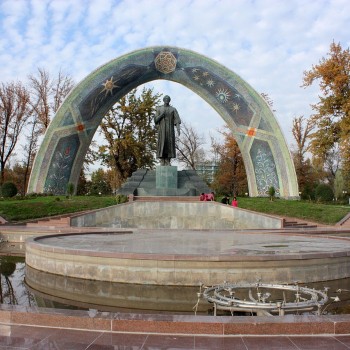
Rudaki Park
When to visit: Between May and September
Rudaki Park is a fantastic panoramic, landscaped garden area featuring fountains, statues, meticulously manicured lawns, the beautiful canopy of trees, and a plethora of stunning flowers.
The Rudaki Park is a great recreational area in Dushanbe with views of the new palace plus the interesting statue of Rudaki at the center. The park also offers views of the city’s iconic new buildings and monuments.



